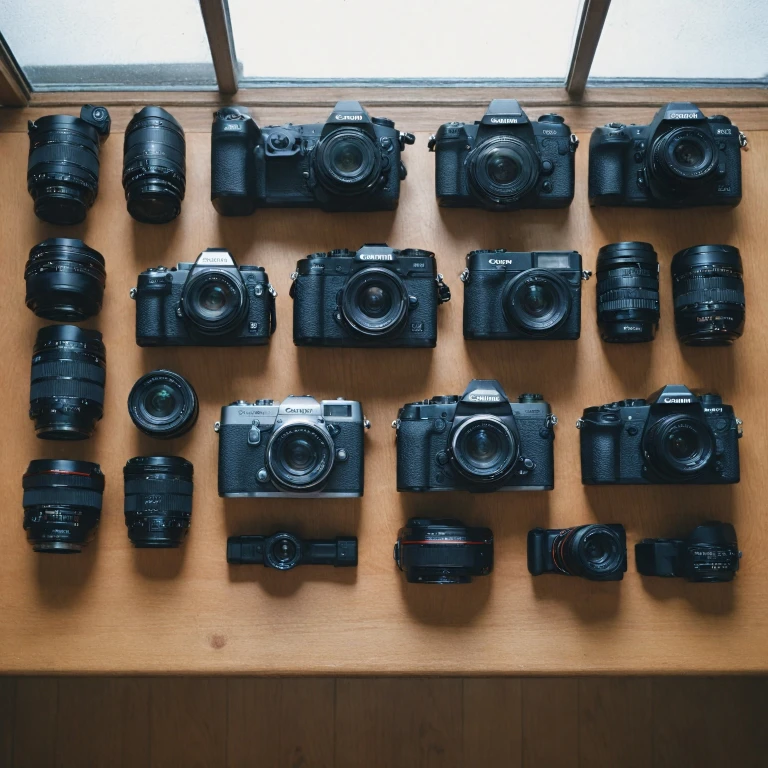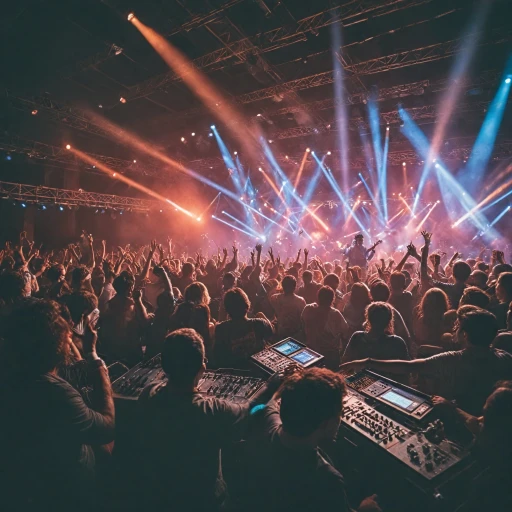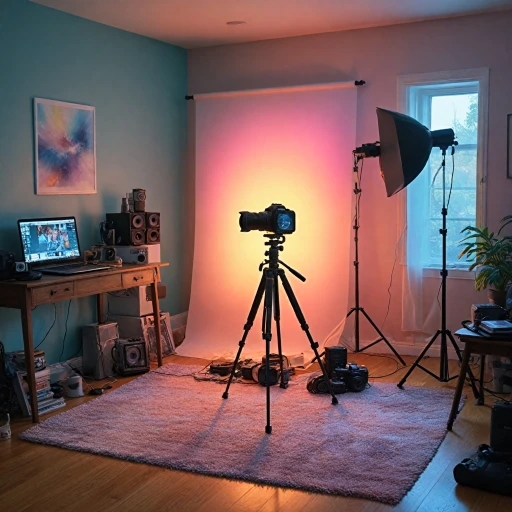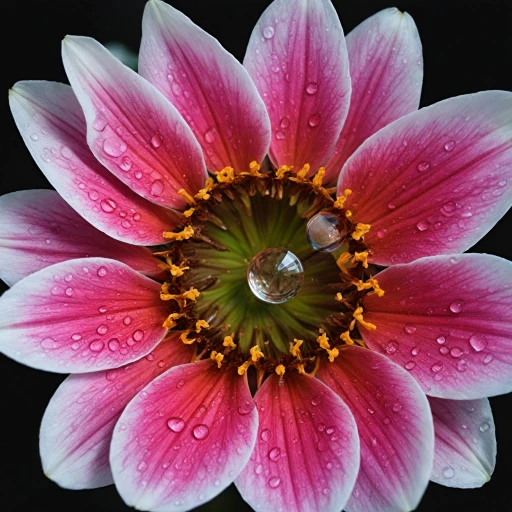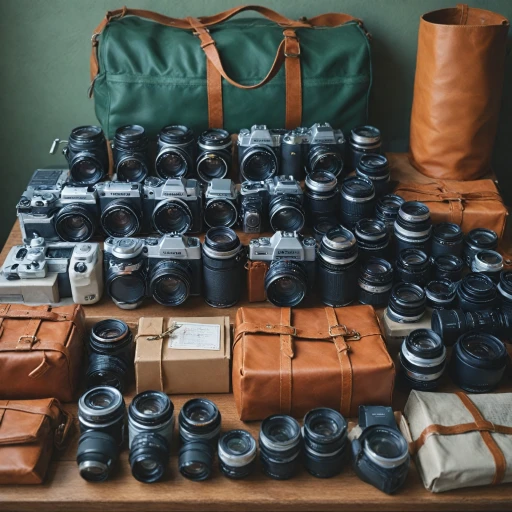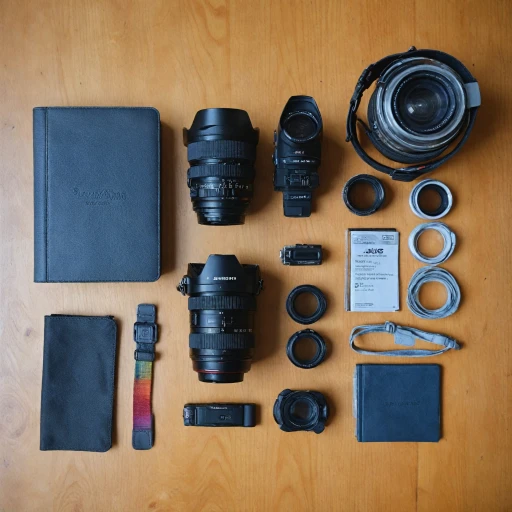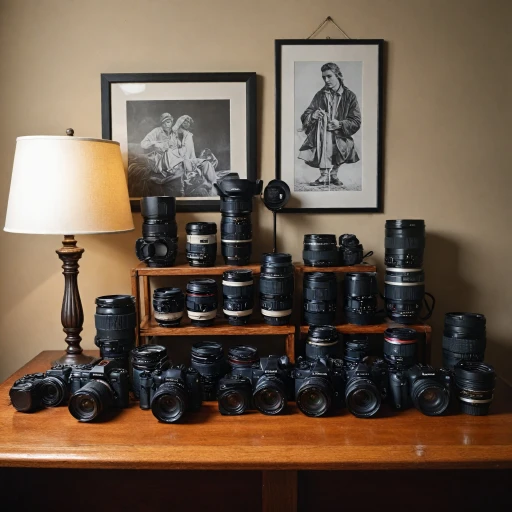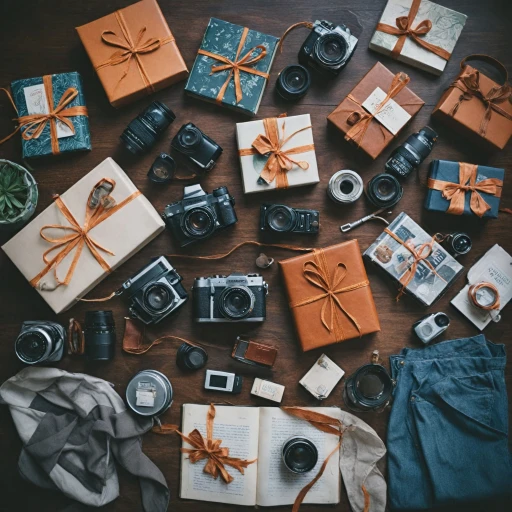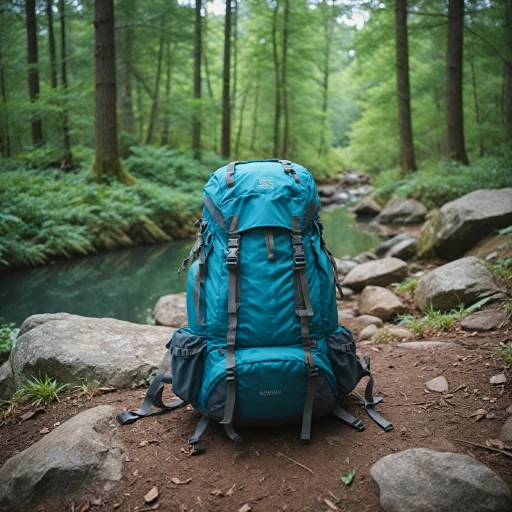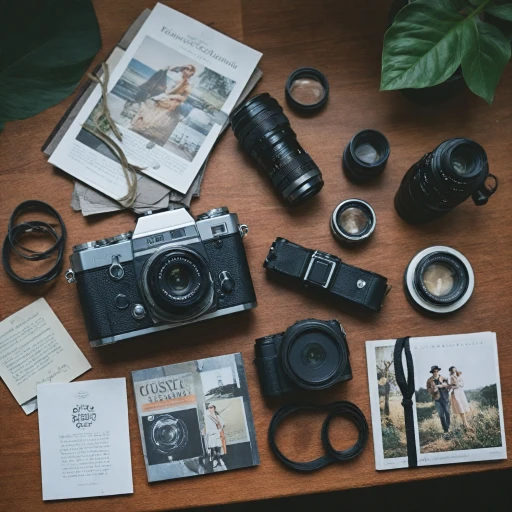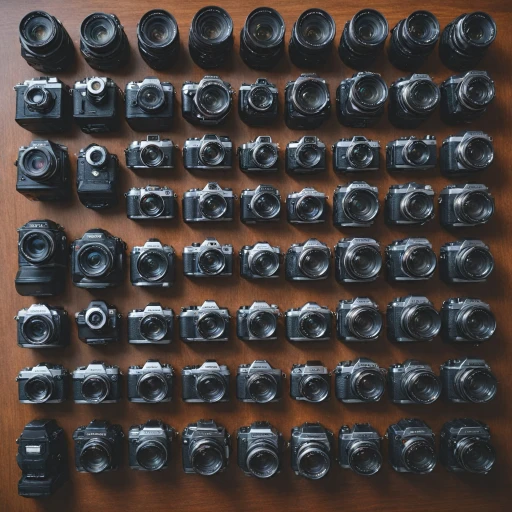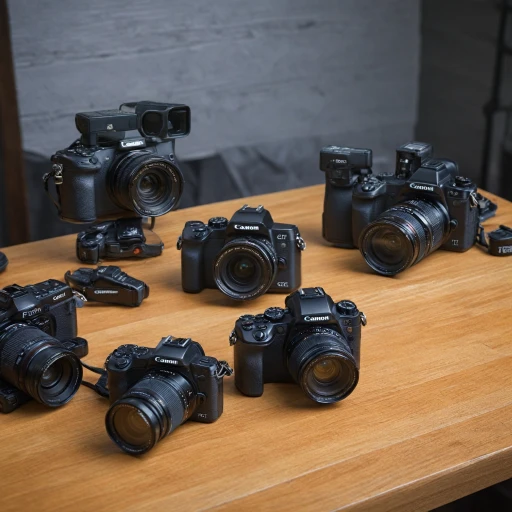
Understanding the Basics of 35mm Digital Cameras
Getting to Know 35mm Digital Cameras
Digital cameras have evolved significantly since the days of film photography. However, the allure of 35mm cameras remains strong, particularly with photography enthusiasts who seek a balance between modern digital technology and the classic charm of film captures. Understanding the basics of these cameras can help in making an informed choice for your photography needs.
The term '35mm' originated from film photography, where it referred to the width of the film used. In the digital realm, a 35mm format typically denotes full-frame cameras that emulate that size. This is especially appealing to those who appreciate the quality of images produced by classic film cameras.
One of the first aspects to grasp is the interplay between the camera's lens and the image sensor. A full-frame sensor, akin to the size of a 35mm film, offers distinct advantages over smaller sensors, such as enhanced image quality, better performance in low light, and a wider dynamic range.
Manual controls are also a significant draw for 35mm digital camera enthusiasts. These controls give photographers the ability to fine-tune settings like shutter speed, aperture, and ISO sensitivity, reminiscent of manual operations in film cameras. Adjusting shutter speeds manually can also help achieve creative effects, such as motion blur or freezing action.
Furthermore, exploring the right lenses can diversify your photographic portfolio. Whether you prefer a point-and-shoot style or more deliberate compositions, having a variety of lenses at your disposal, from wide-angle to telephoto, allows you to adapt to different scenes effectively.
Brands like Canon, Nikon, Pentax, Olympus, and Leica continue to offer some of the best camera models catering to diverse photography styles. Each brings unique features to the table, potentially influencing your ultimate choice.
Finally, it's important to consider the type of photography you wish to pursue. Whether it's film photography emulation through digital means or a desire for medium format capabilities, the camera you select should align with your creative vision and technical requirements. Understanding the Value of a 6-megapixel Camera can also provide insights into harnessing a camera's full potential, particularly while focusing on high-quality output rather than just pixel count.
Key Features to Look for in a Good 35mm Camera
Exploring Essential Aspects of 35mm Cameras
When choosing a 35mm digital camera, understanding certain key features can dramatically influence your decision and ensure you get the best camera for your photography needs.- Shutter Speed and Exposure Control: A good 35mm camera will offer a range of shutter speeds. This flexibility is crucial whether you're capturing fast action with high shutter speeds or experimenting with longer exposures for creative effects. Shutter priority modes in digital cameras mimic this feature, allowing better control over exposure.
- Manual Focus vs. Autofocus: Having the ability to switch between manual focus and autofocus provides versatility, whether you're using vintage lenses on an SLR camera or experimenting with manual focus lenses for a more traditional experience. Leica and Nikon cameras offer excellent manual focusing options.
- Lens Compatibility: Consider cameras that accommodate a variety of lenses. Canon EOS, Pentax, and Olympus systems, for example, have a vast selection of lenses, from robust telephoto options to elegant prime lenses, perfect for different photography styles.
- Film Simulation and Half Frame Support: If you're nostalgic about film photography, some digital options offer film simulation modes, replicating that feel. Half frame modes can help you creatively use space, especially in medium format cameras.
- Focusing Screens and Viewfinders: A high-quality focusing screen and viewfinder can dramatically enhance the manual focus experience. Clarity in the viewfinder is essential for precise focusing.
- Image Quality: The quality of your images is a crucial consideration. Cameras with higher megapixels don't always equate to better images. Understanding the power of a 6-megapixel camera — see more — reveals how factors like sensor size and lens quality can be more influential.
- Durability and Build Quality: Be sure your camera feels solid and robust. You'll want to trust it in various shooting conditions. Modern cameras from brands like Nikon and Canon ensure this reliability.
Comparing Popular 35mm Camera Models
In-Depth Look at 35mm Digital Camera Models
When exploring the world of 35mm digital cameras, it’s crucial to understand what distinguishes various popular models. In this section, we'll delve into comparisons between some of the most renowned cameras in the market. Each model offers unique features catering to different photography needs.
Canon EOS Series
Canon's EOS series is a staple in the digital camera market, known for its impressive image quality and versatile lenses. Whether you’re working with manual focus or shutter priority, these cameras provide extensive control options suitable for both beginners and seasoned photographers. The Canon EOS lineup offers solutions from entry-level cameras to more professional models, ensuring performance that matches your specific requirements. For more on finding the right camera, check out our guide on perfect presents for photography enthusiasts.
Nikon’s Diverse Offerings
Nikon cameras are known for their rugged design and advanced features. They often cater to a range of photographic styles, from film photography enthusiasts to digital SLR users. With superior manual controls and various lens options, Nikon models like the D series have established themselves as robust choices for capturing high-quality images with precision and clarity.
Olympus and Pentax: Versatile Choices
For those who seek cameras that pair advanced technology with traditional film qualities, Olympus and Pentax offer compelling options. These brands provide models that are particularly popular among film photography aficionados, thanks to features like impressive motor drives and adaptable light meters. Their cameras often support different lens systems, allowing for significant versatility in photography techniques.
Leica Cameras: The Best in Craftsmanship
Leica digital cameras are renowned for their exquisite craftsmanship and premium build quality. Although their price point may be higher, they are often sought after for their precision optics and exceptional image productions. Leica’s attention to detail makes their products a top choice for photographers who prioritize quality and are willing to invest in the best film-inspired cameras.
In essence, each brand and model comes with its own set of strengths, allowing photographers to make an informed decision based on their specific needs and budget. Remember, the best camera is one that complements your photographic journey and enhances your ability to capture moments in time with precision and creativity.
Budget Considerations for 35mm Cameras
Balancing Quality and Budget for Digital Photography
When searching for a good 35mm digital camera, budget considerations can weigh as heavily as the desire to capture stunning images. There are various options available, and understanding the balance between cost and features is crucial.- Entry-Level Models: If you're venturing into the world of film photography or digital cameras, an entry-level SLR might cater to your needs without breaking the bank. Brands like Nikon, Canon, and Pentax offer affordable options that still provide a decent image quality.
- Mid-Range Options: For those willing to spend a little more, mid-range cameras can offer added features like improved manual focus capabilities and better lens quality. Think of models from Olympus or a good second hand Leica, which might not reflect the newest features but stand strong in quality and reliability.
- High-End Selections: If budget isn’t a constraint, investing in a top-tier camera could be worthwhile. High-end cameras offer superior image sensors, faster shutter speeds, and more advanced focusing screens. They suit professional environments and serious enthusiasts who willfully blur the lines between film cameras and digital precision.
Evaluating Cost vs. Feature Set
As you're analyzing the best camera for your needs, weigh not just the price but what you're getting in terms of capabilities. An Olympus film camera might top the charts for medium format prowess, yet a Canon EOS 35mm merges well-rounded performance across several aspects, including shutter priority and light meter features. Consider what features are non-negotiable for you. Do you need manual focusing, or would auto-focus suffice? Do you expect to adjust shutter speed often, or prefer a point-and-shoot convenience? Identifying priorities helps streamline your options.Explore Savings and Discounts
Don't shy away from exploring options like buying a second hand film camera. The market for used cameras could offer excellent value with models that included lenses, or additional accessories such as a half frame adapter, at a fraction of the new camera price. Remember, whether you opt for Kodak Ektar film compatibility or cutting-edge digital models, the best 35mm camera for your budget is about how well it aligns with your photography needs.Accessories to Enhance Your 35mm Camera Experience
Essential Gear to Amplify Your Photography Journey
To truly elevate your photography experience with a 35mm digital camera, you'll want to consider several accessories that can significantly enhance your ability to capture stunning images. The right gear can cater to your specific photography needs and will add convenience and precision to your daily shooting endeavors. Here are some recommendations:- Lenses: Whether you are using a Nikon, Pentax, or Canon, investing in additional lenses is pivotal. Varied focal lengths and apertures provide flexibility, allowing you to adapt to different lighting conditions and capture diverse subjects. A prime lens can help you achieve a sharp image with a shallow depth of field—great for portraits, while a zoom lens offers versatility.
- Tripods: For capturing long exposures or photographing in low-light conditions, a tripod is a must. It stabilizes your camera to prevent motion blur and allows for more precise control over framing and focus, especially when using manual focus.
- Filters: Consider investing in filters such as polarizers to reduce reflections and enhance colors, or neutral density filters to manage exposure times without affecting color balance.
- External Flash: An external flash unit provides better lighting control compared to the built-in camera flash. This can be especially useful in outdoor or low-light photography and offers a range of powerful lighting options without harsh shadows.
- Camera Bags: Protecting your investment is important, so a good-quality camera bag is essential. It will keep your camera, lenses, and accessories safe from dust, moisture, and accidental knocks.
- Memory Cards: Having multiple memory cards ensures you won’t run out of storage space at a critical moment. Opt for cards with high write speeds for quick image transfer, especially important if your camera takes high-resolution images using formats like Kodak Ektar.
- Battery Packs: Extra batteries or an external battery pack are invaluable for long photography sessions. Features like motor drive and shutter priority modes consume more power, so backup power is crucial.
- Focusing Screens: For those using cameras with manual focus options, installing a focusing screen can significantly simplify the process, making your shots crisp and cutting down on wasted time.
Tips for Maintaining Your 35mm Digital Camera
Essential Maintenance Tips for Optimum Camera Performance
Maintaining a 35mm digital camera is crucial to ensuring consistent and high-quality performance. Taking proper care of your camera not only extends its lifespan but also ensures that you capture the best images possible. Here are a few essential tips to keep your camera in top condition:- Regular Cleaning: Dust and dirt can accumulate on your camera's exterior, focusing screen, lenses, and internal components. Use a soft, lint-free cloth to clean the exterior regularly. Invest in a lens cleaning kit for thorough maintenance of your nikkor or canon lenses. Don't forget to clean the camera's viewfinder and display screen to maintain clear imaging.
- Protecting the Lens: Always use a lens cap when the camera is not in use. This prevents scratches and other potential damage. For added protection, consider using a UV filter, which safeguards your lens and enhances image quality by reducing glare and improving light balance.
- Battery Care: Proper battery maintenance is crucial. Avoid letting the battery completely discharge before recharging, and remove it from the camera if you're not using it for an extended time. Store batteries in a cool, dry place to prevent damage and prolong their lifespan.
- Storage Conditions: Protect your camera from extreme temperatures and humidity. Moisture can damage sensitive components like the light meter, while excessive cold can affect battery life. Use a camera bag or case to keep the camera dry and safe when not in use.
- Periodic Servicing: Even with meticulous care, occasional servicing by a professional can identify and fix potential issues such as shutter speed inaccuracies or motor drive malfunctions. This is especially important if you regularly use your camera for film photography or in challenging environments.
- Firmware Updates: Keep your camera's firmware updated. Manufacturers like Nikon, Pentax, and Olympus often release updates that improve functionality and fix known issues. Regularly check the manufacturer's website or support resources for the latest updates.
- Handling Practices: When using manual focus or shutter priority modes on a film camera, avoid applying excessive force to not damage sensitive parts. Always hold the camera with both hands to prevent accidental drops, especially if you're working with a heavy medium format setup.
Maintaining your camera not only preserves its mechanical integrity but also enhances your film photography journey. By implementing these simple, yet effective maintenance practices, you can focus more on capturing the moments that matter.
